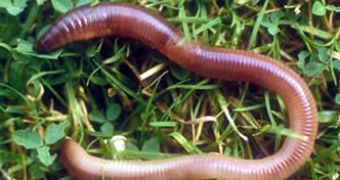Despite their living in the soil and not above ground, earthworms help protect plants against slugs, a team of University of Natural Resources and Life Sciences Vienna researchers now say.
These specialists also maintain that, when wishing to protect various natural ecosystems against said pest, it is best to increase plant diversity as this also aids to curb the slugs' apetite.
BioMed Central informs us that the researchers reached these conclusions following their looking into how slugs behaved when introduced to various simulated grassland environments.
Thus, it was discovered that, whenever earthworms were also present in such ecosystems, the slugs ate about 60% less leaves than they normally would have.
It is said that these changes in the slugs' feeding behavior are caused by an earthworms-induced increase in the nitrogen content of plants.
The specialists also discovered that, whenever a simulated grassland environment was characterized by increased plant diversity, the leaf area damaged by the slugs was about 40% smaller than it would have been in the case of low plant diversity.
“Our results suggest that two processes might be going on. Firstly, earthworms improved the plant’s ability to protect itself against slugs perhaps through the build-up of nitrogen-containing toxic compounds,” study lead author Dr. Johann Zaller detailed on the findings of this investigation.
“Secondly, even though these slugs are generalists they prefer widely available food and in high diverse ecosystems slugs eat less in total because they have to switch their diets more often since plants of the same species are less available,” Dr. Johann Zaller further explain.
Given the findings of this investigation, the researchers urge that gardeners and farmers take the time to up both local earthworm population and plant diversity.
A detailed account of this research and its findings is made available to the public in the scientific journal BMC Ecology.

 14 DAY TRIAL //
14 DAY TRIAL //